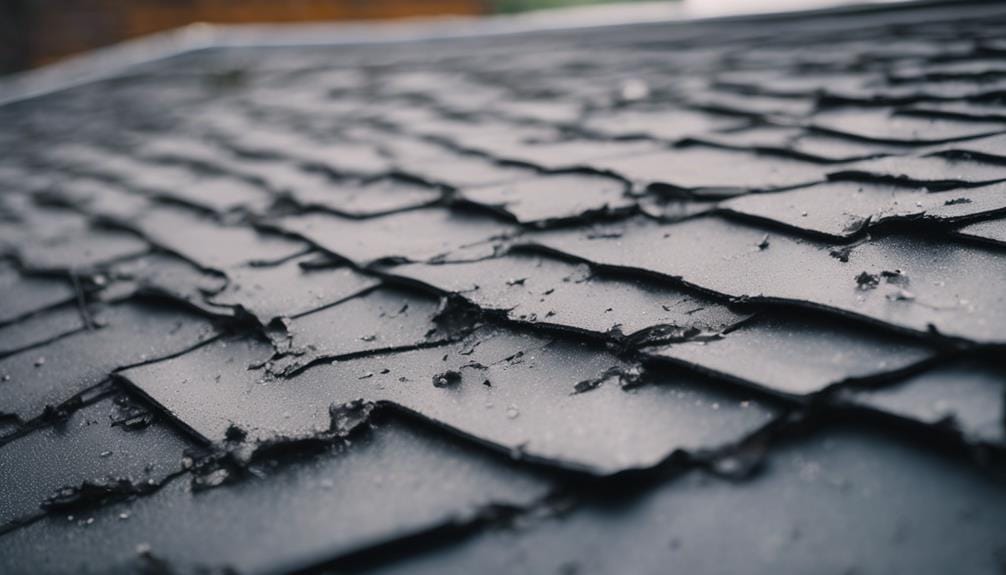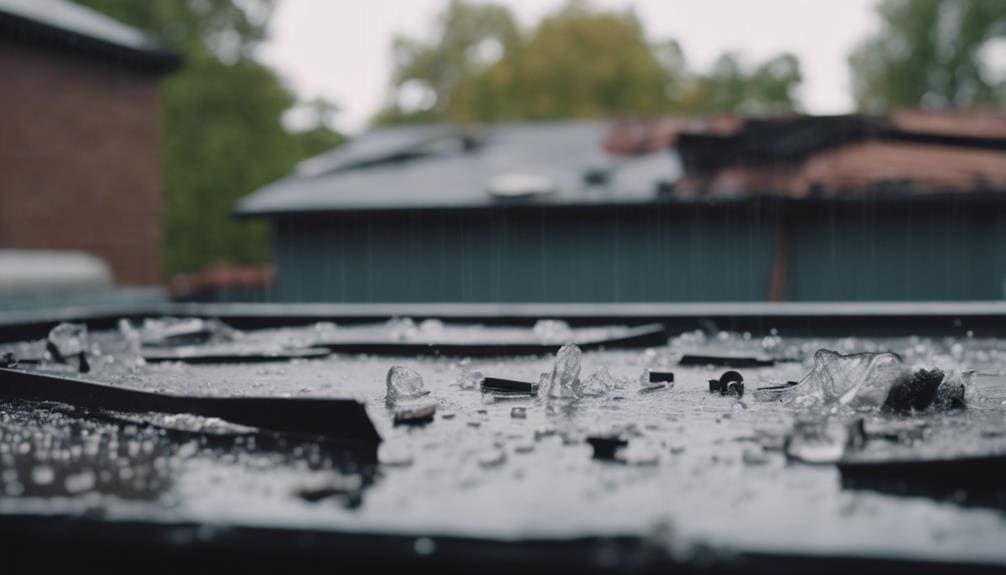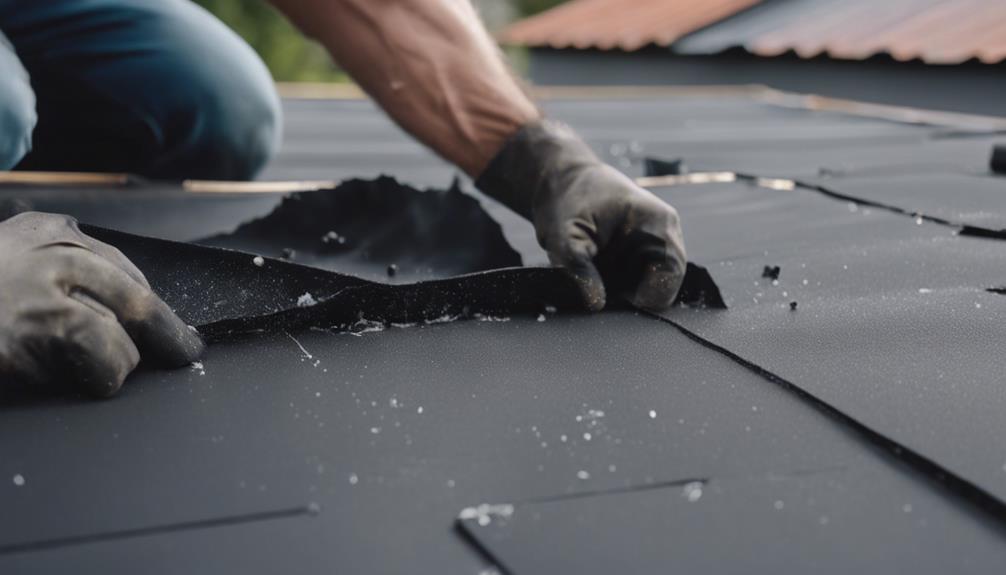EPDM roofs are known for their durability, but issues may arise over time. Knowing when to tackle repairs yourself and when to seek professional assistance is essential.
While some minor repairs can be handled DIY, others require the expertise of a roofing professional. Understanding the indicators that suggest professional intervention is needed can prevent costly mistakes.
Let’s explore the nuances of EPDM roof repair techniques and navigate the complexities of deciding between DIY solutions and professional involvement for the best roof maintenance.
Key Takeaways
- Proactive maintenance extends roof life.
- DIY for minor repairs like seams.
- Call professionals for extensive damage.
- Quality materials and installation are crucial.
Common EPDM Roof Problems

EPDM roofing systems commonly encounter issues such as seam failure, ponding water, and punctures, which can compromise the integrity of the roof and lead to potential leaks. Seam failure is a significant problem in EPDM roofs due to aging, poor installation, or exposure to extreme weather conditions. When seams separate or tear, it creates a pathway for water infiltration.
Ponding water, where water accumulates on the roof for more than 48 hours after rainfall, can accelerate the deterioration of the membrane and increase the risk of leaks. Punctures caused by sharp objects or debris can also jeopardize the roof’s effectiveness in keeping water out.
Understanding these common EPDM roof problems is essential for timely detection and appropriate repairs to prevent further damage. Regular inspections and maintenance can help identify issues early on and address them promptly. By addressing seam failures, ponding water, and punctures proactively, building owners can extend the lifespan of their EPDM roofing system and maintain a watertight building envelope.
DIY EPDM Roof Repair Techniques
Given the common issues faced by EPDM roofing systems such as seam failure, ponding water, and punctures, effective DIY repair techniques play an important role in maintaining the roof’s integrity and preventing potential leaks. When dealing with EPDM roof repair on your own, consider the following key techniques:
- Seam Repair: Utilize EPDM seam tape to patch up any visible tears or separations in the roofing material.
- Ponding Water Solution: Apply EPDM liquid coating over areas where water tends to accumulate to prevent further damage and enhance drainage.
- Puncture Patching: Use EPDM patch kits to seal off any holes or punctures in the membrane, ensuring a watertight seal.
Signs Professional Help Is Needed

When should property owners consider seeking professional assistance for EPDM roof repairs? While some EPDM roof repairs can be done by property owners themselves, there are certain signs that indicate the need for professional help. If any of the following issues are present, it is advisable to call a professional roofing contractor:
- Extensive Damage: If the damage to the EPDM roof is extensive, covering a large area or involving multiple layers, it is best to seek professional assistance.
- Leaks: Persistent leaks that cannot be easily located or repaired may require the expertise of a professional roofer.
- Wrinkles or Blisters: Significant wrinkling or blistering of the EPDM membrane could indicate underlying problems that need professional assessment.
- Severe Ponding: Prolonged ponding of water on the roof can lead to structural issues; it is best to have a professional address this problem.
- Age of Roof: If the EPDM roof is reaching the end of its expected lifespan, it is wise to have a professional evaluate its condition and recommend the necessary repairs or replacement.
| Signs Professional Help Is Needed | ||
|---|---|---|
| Extensive Damage | Leaks | Wrinkles or Blisters |
| Severe Ponding | Age of Roof |
Choosing a Reputable Roofing Contractor
Upon encountering signs that professional help is needed for EPDM roof repairs, property owners must carefully select a reputable roofing contractor to address the necessary repairs or replacement. When choosing a roofing contractor, consider the following:
- Experience: Look for a contractor with a proven track record in EPDM roof repairs. Experience often correlates with expertise and quality workmanship.
- Certifications: Make sure that the roofing contractor holds relevant certifications in EPDM roof installation and repair. This indicates that they have undergone proper training and meet industry standards.
- References: Ask for references or check online reviews to gauge the contractor’s reputation. Positive feedback from previous clients can give you confidence in their abilities to handle your EPDM roof repair needs.
Conclusion and Final Tips

In wrapping up considerations for EPDM roof repair, it is essential to emphasize the significance of proactive maintenance to prolong the lifespan of the roof. Regular inspections, prompt repairs of any damages, and ensuring proper drainage are key aspects of maintaining an EPDM roof in best condition.
Additionally, keeping the roof clean from debris and overhanging branches can prevent unnecessary stress on the membrane. It is advisable to have a professional roofing contractor conduct a thorough inspection at least once a year to catch any potential issues early on.
Moreover, investing in high-quality EPDM materials and installation by reputable contractors can save both time and money in the long run. DIY repairs can be feasible for minor issues like small punctures or tears, but for more extensive damage or if unsure about the repair process, it is best to seek professional help.
Frequently Asked Questions
Can EPDM Roofs Be Repaired in Cold Weather or Do Repairs Need to Wait for Warmer Temperatures?
EPDM roofs can be repaired in cold weather using specialized adhesives and techniques designed for low temperatures. Waiting for warmer temperatures is advisable for best results, but professional contractors can effectively address repairs year-round with proper precautions.
How Can I Prevent Future Leaks and Damage to My EPDM Roof After Completing Repairs?
To prevent future leaks and damage to your EPDM roof post-repairs, guarantee regular inspections, timely maintenance, and prompt repair of any issues. Use high-quality materials, follow manufacturer guidelines, and consider professional assistance for complex problems to maintain the roof’s integrity.
Are There Any Specific Tools or Equipment Needed for DIY EPDM Roof Repairs That Are Not Commonly Found in a Typical Homeowner’s Toolbox?
Specific tools such as seam rollers, EPDM repair kits, and specialized adhesives are essential for DIY EPDM roof repairs, not commonly found in a homeowner’s toolbox. These tools guarantee proper repair and maintenance.
Does the Type or Age of the EPDM Roof Impact Whether DIY Repairs Are Feasible, or Is It Generally Safe to Attempt Repairs on Any EPDM Roof?
The type and age of EPDM roofs can impact the feasibility of DIY repairs. While some issues may be manageable for homeowners, older or extensively damaged EPDM roofs may require professional assessment and repair to guarantee long-term effectiveness and safety.
Are There Any Special Considerations or Techniques to Keep in Mind When Repairing EPDM Roofs on Commercial Buildings Versus Residential Buildings?
When repairing EPDM roofs on commercial buildings compared to residential ones, special considerations include larger roof areas, complex drainage systems, and potential safety hazards from increased heights. Techniques involve utilizing commercial-grade materials and equipment for durability.